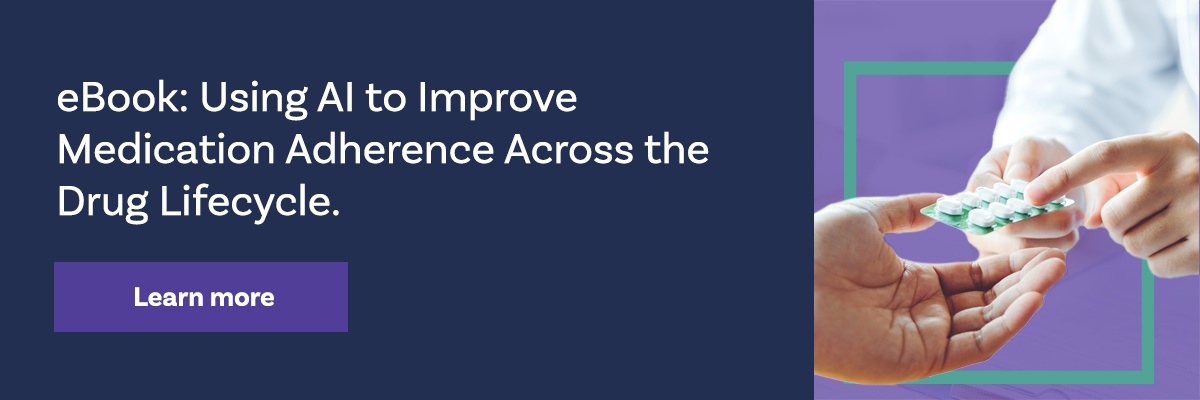Boosting medication adherence is consistently a top priority in healthcare. Emerging technologies have introduced several new ways for pharmacists, providers, and care teams to proactively identify and intervene when patients are non-adherent, and although these innovations have certainly helped to improve adherence as a whole, they aren’t necessarily as effective when it comes to children.
Medication non-adherence in children, adolescents, and teenagers is an even greater struggle than in adults for a number of reasons. Barriers to adherence in children range from a child’s age and fear of side effects, to a family’s socioeconomic status and level of health literacy. Recognizing these obstacles and identifying potential solutions can be challenging, but not impossible.

By taking the right factors into consideration to form the best approach, pharmacists, parents, and prescribers can all work together to improve medication adherence in children. Here’s how:
Simple is Best for a Pediatric Drug Regimen
The simpler a dosing schedule is in terms of frequency and duration, the greater the likelihood that a child will be adherent. Prescribing physicians and pharmacists should collaborate to simplify medication regimens with an easy, straightforward schedule that isn’t difficult for parents to help children adhere to.
For example, single or “once-daily” medications help reduce the dosing burden for caregivers and the stigma associated with taking medications at school. After all, no kid wants to be the one heading to the nurse’s office every day to take their meds!
Personalize the Taste and Formulation for Children
Tailoring the taste and formulation of a medication to align with age-specific preferences is another way to improve medication adherence in pediatric patients. For instance, many children find it difficult to swallow pills and prefer liquid medications. When possible, prescribers and pharmacists should treat pediatric patients with drugs that come in liquid form and a variety of kid-friendly flavors. Hey, we all took the “pink bubblegum medicine” (aka amoxicillin) at some point as kids, didn’t we?
Some parents take a creative approach, masking or improving the taste of medications by giving children popsicles or ice cubes first to numb taste buds, or by following up dosing with juice or a sweet treat. Chilled liquid medications may be more easily tolerated if the drug is stable at refrigerated temperatures. Additionally, companies like FLAVORx sell sweetening enhancer and bitterness suppressor flavoring agents designed to improve medication adherence in children.
Maximizing Parent Involvement from Day One
Another highly effective way to improve medication adherence in pediatric patients is to make sure parents are on board from day one. Pharmacists and prescribing providers should not only provide parents with clear, detailed dosing and administration instructions, but also a comprehensive breakdown of why the medication is needed.
For example, what condition or ailment is it treating? Why is medication adherence important? What are the potential ramifications of medication non-adherence in children?
Each of these questions should be addressed to ensure parents know exactly when, how, and why they should administer medications. Remember to take factors like language barriers, education level, and health literacy into account when communicating with parents, and ask them to clarify your instructions to ensure they’re on the same page.
Incorporate the Prescribed Medicine into a Child’s Daily Routine
Incorporating drug dosing into another part of a child’s daily routine can also help with compliance. Administering medicine at the same time every day reduces forgetfulness and in turn increases the likelihood of medication adherence.
For example, many parents opt to administer medication with breakfast or dinner. Before the child takes a bath or brushes their teeth can also be good times to incorporate dosing. For most medications, the ‘when’ doesn’t matter as much as consistency, so it’s important to choose a time that works well for both parent and child.
Address Cost and Access Barriers for Families
Cost and access to medication continue to present barriers to adherence for many families, but patient support programs can help. Pharmacists can address cost concerns by supplying low-income and uninsured patients with copay cards, using drug discount programs, and helping patients apply to financial assistance programs offered by the drug manufacturers.
If the issue is primarily due to challenges accessing the medication(s), setting up telehealth appointments with prescribers and home delivery for medications may be a solution. Additionally, medication synchronization programs can make it easier and more convenient for parents to regularly refill prescriptions before supply runs out, which can reduce even short-term gaps in care. With the help of advancing artificial intelligence (AI) technologies, pharmacies and pharmaceutical manufacturers can more easily personalize interventions and create the optimal experience for each individual, maximizing patient support.
These are just a few ways pharmacists, providers, and parents can join forces to improve medication adherence in children. Research on effective interventions for pediatric patients is still fairly minimal because most adherence programs focus on improving medication compliance in adults. However, following these tips and identifying new ways to engage children (or, more specifically, their parents) to take an active role in their care can improve medication adherence—and, ultimately, patient outcomes in the process.
